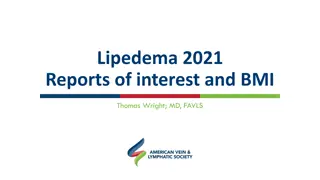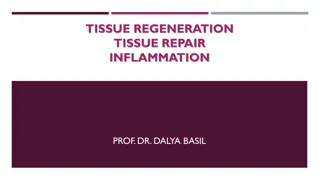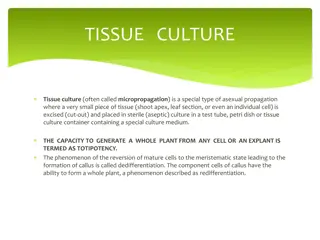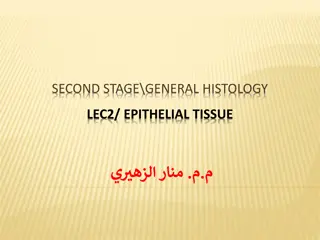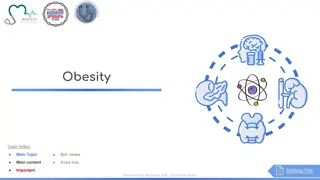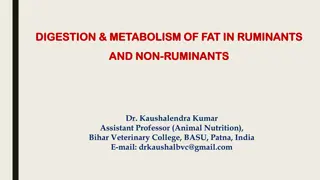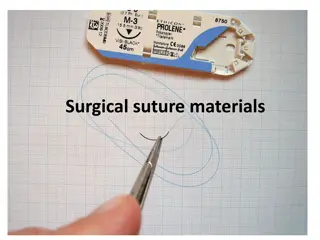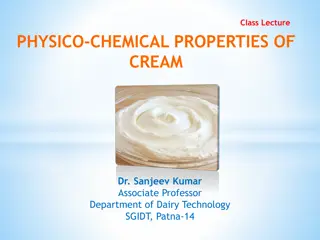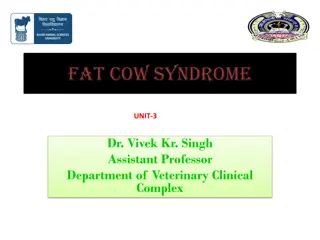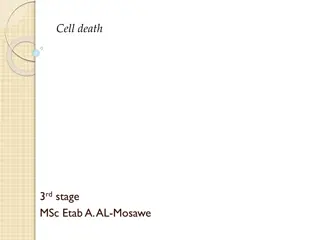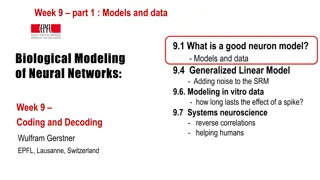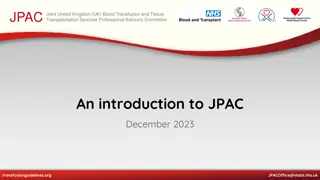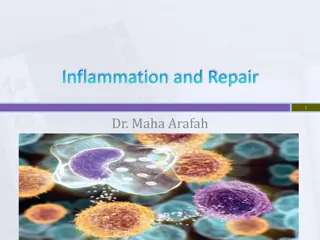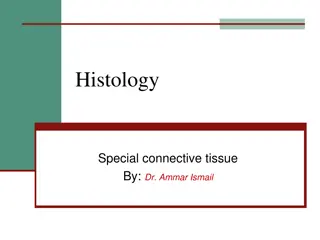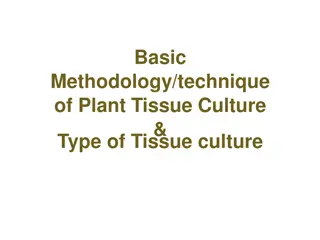Decoding Insights into Lipedema Fat Tissue
Lipedema fat cells exhibit unique characteristics such as fibrous, nodular, and increased stem cells, presenting distinct lipid composition and gene expressions compared to normal adipose tissue. Research sheds light on the cellular and signaling variances in Lipedema fat tissue, highlighting potential genetic factors impacting the condition. Understanding these differences is crucial for developing targeted treatments and dispelling misconceptions about Lipedema.
Download Presentation

Please find below an Image/Link to download the presentation.
The content on the website is provided AS IS for your information and personal use only. It may not be sold, licensed, or shared on other websites without obtaining consent from the author. Download presentation by click this link. If you encounter any issues during the download, it is possible that the publisher has removed the file from their server.
E N D
Presentation Transcript
New Insights Into Lipedema Fat Cells & Tissue December 2021
What We Already Know Lipedema adipose/fat tissue is different from normal adipose tissue. Adipose tissue of lipedema patients is more fibrous, nodular and tender. When we look at and feel lipedema fat tissue in surgery, the mass of adipose tissue we see and feel these differences even before we look at the tissue under the microscope or analyze the tissue components.
Adipose-Tissue Cellular and Signaling Differences Lipedema (Ishaq et al): Key Findings: Important step in our understanding of the difference between subcutaneous loose connective tissue or adipose tissue of individuals with lipedema Differences of lipedema tissue cells in terms of their gene expressions, cellular components, metabolic products, mitotic rate, and propensity for proliferation compared to controls. Report on a possible gene that may play an important role in the development or perpetuation of lipedema Bub1. Further solidifies evidence that lipedema is a fat tissue disease and will further quiet the critics who confuse lipedema with lifestyle- induced obesity. Published in International Journal of Obesity, November 2021.
In Lipedema different genes are turned on. Adipose Tissues Show Distinct Gene Signatures Fat tissue from lipedema was compared to location, gender and age matched tissue from non lipedema patients. Heatmap gene expression of adipose tissue by Z-score fold-change value: red indicates upregulation and blue indicates downregulation
Lipid Composition in Lipedema adipocytes The difference in lipid composition includes significantly increased lipids in lipedema included glycerophospholipids and sphingolipids. Different metabolism of lipedema fat as characterized by differing production of phospholipid production compared to normal fat. Lipedema adipocytes are shown on the left half [Header Bright Red] and non lipedema adipocytes are shown on right side of hierarchal plot of lipid composition [Green Header over columns].
Stem cells numbers are increased in Lipedema Fat Tissue In this study, stem cells [ ADSCs ]from lipedema fat compared stem cells of matched people without lipedema. The stems in lipedema are increased in number. Note: ADSCs are stem cells. They can continuously divide and renew themselves. The ADSCs stem cells can also can become mature fat cells or other types of cells to sustain or grow fat tissue.
More of Lipedema Stem Cells contain Fat Droplets and have More Fat Droplets per cell The number of fat droplets, percentage of fat-positive cells, and number of fat droplets/cell were significantly increased in lipedema adipocytes compared to controls . Lipedema fat cell had more fat in them. The presence of fat droplets in stem cells / ASCDs indicates maturation toward an adipocyte.
Cell Cycle Gene like Bub1 are upregulated in Lipedema Cell-cycle genes involved in regulating cell growth and proliferation are dysregulated in lipedema ADSCs and may contribute to the increased adipocyte number, and maldistribution and accumulation of dystrophic fat in lipedema. Bub1 which is one of the cell cycle genes is turned on more or upregulated in lipedema
Bub1 & Lipedema cells Bub1 mRNA production in Lipedema ADSCs is increased compared to controls. The Bub1 gene s overexpression is associated with hyperproliferation and dysregulation of key cellular processes in several cancers. Ishaq et notes that the over expression of Bub1 in lipedema could play a similar role in hypertrophy and persistence of lipedema fat tissue as it does in cancers such as gastric cancer. Bub1 mRNA was quantified by qRT-PCR in lipedema ADSCs
Conclusion and Relevance Adipocytes and their stem cells from individuals with lipedema are structurally different and behave differently from cells of normal fat tissue. Given the same nutritional support lipedema derived stem cells proliferated compared to normal fat derived stem cells. The different cell biology of the lipedema cells that leads to hyperproliferation fat tissue and may explain disproportionate growth compared to other adipose tissue. Is the biology of lipedema fat different because of genetic difference or is the difference in fat cell biology of lipedema a product of an altered environment?
Sources Ishaq M, Bandara N, Morgan S, Nowell C, Mehdi AM, Lyu R, McCarthy D, Anderson D, Creek DJ, Achen MG, Shayan R, Karnezis T. Key signaling networks are dysregulated in patients with the adipose tissue disorder, lipedema. Int J Obes (Lond). 2021 Nov 11. doi: 10.1038/s41366-021-01002-1. Epub ahead of print. PMID: 34764426. https://www.nature.com/articles/s41366-021-01002-1 and https://www.nature.com/articles/s41366-021- 01002-1.pdf


